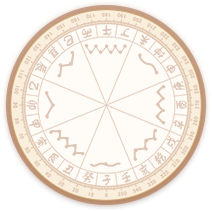如何为丙烯作品起一个绝佳的名字呢
- 作者: 王梨珂
- 来源: 投稿
- 2024-07-26
一、如何为丙烯作品起一个绝佳的名字呢
考虑作品的主题和情绪探索作品中描绘的场景、人物或物体。
思考作品所传达的情绪或氛围。
使用描述性语言使用生动的形容词和动词来捕捉作品的视觉元素。
考虑作品的色彩、纹理和构图。
借鉴文学或艺术史从诗歌、小说或艺术史中寻找灵感。
借用引人入胜的短语或引用来赋予作品深度。
使用隐喻或象征探索作品中可能存在的隐喻或象征意义。
使用这些元素来创造一个引人入胜且令人难忘的名字。
保持简洁避免使用冗长的或复杂的标题。
选择一个简洁而有力的名字,能立即引起共鸣。
考虑作品的媒介突出丙烯作为媒介的独特之处。
使用诸如“丙烯画布”或“丙烯抽象”之类的术语。
征求反馈向朋友、家人或艺术专业人士征求对潜在名称的反馈。
他们的意见可以帮助你完善你的选择。
示例“午夜之舞”:描绘了一群在月光下跳舞的人物。
“色彩交响曲”:突出了作品中大胆而充满活力的色彩。
“抽象的沉思”:暗示了作品的内省和冥想性质。
“城市之光”:捕捉了城市景观的喧嚣和活力。
“丙烯画布上的梦境”:强调了丙烯作为媒介的流动性和梦幻般的品质。
二、如何为丙烯作品起一个绝佳的名字呢英文
How to Name Your Acrylic Painting Masterpiece
1. Consider the Subject Matter:
Describe the main elements or objects in the painting, e.g., "Tranquil Seascape" or "Abstract Floral Burst."
2. Capture the Mood or Emotion:
Convey the feeling or atmosphere evoked by the painting, e.g., "Serene Sanctuary" or "Ethereal Embrace."
3. Use Metaphors or Symbolism:
Create a deeper meaning or connection by using figurative language, e.g., "Whispers of the Wind" or "Dance of the Elements."
4. Reference Art History or Culture:
Draw inspiration from famous paintings or artistic movements, e.g., "Homage to Monet" or "Zen Garden."
5. Use Descriptive Adjectives:
Enhance the visual impact by using vivid adjectives that describe the colors, textures, or brushstrokes, e.g., "Azure Sky" or "Impasto Symphony."
6. Keep it Concise and Memorable:
Aim for a name that is easy to remember and rolls off the tongue, e.g., "Celestial Glow" or "Chromatic Rhapsody."
7. Consider the Context:
If the painting is part of a series or exhibition, consider a name that reflects its place within that context, e.g., "Chapter One: Genesis" or "From the Depths."
8. Seek Feedback:
Share your potential names with friends, family, or fellow artists to gather their perspectives and refine your choice.
9. Trust Your Intuition:
Ultimately, the best name for your painting is the one that resonates with you and captures the essence of your artwork.
Additional Tips:
Use strong verbs that evoke action or movement.
Avoid generic or overused names.
Consider the size and scale of the painting when choosing a name.
Don't be afraid to experiment with different names until you find the perfect fit.

三、如何为丙烯作品起一个绝佳的名字呢英语
How to Name Your Acrylic Painting Masterpiece
Naming your acrylic painting is an important part of the creative process. A well-chosen name can enhance the impact of your artwork and make it more memorable. Here are some tips on how to come up with a great name for your acrylic painting:
1. Consider the subject matter. What is your painting about? Is it a landscape, a portrait, or an abstract composition? The subject matter of your painting can give you some clues about what to name it. For example, if you've painted a landscape of a mountain range, you might name it "Majestic Peaks" or "Mountain Majesty."
2. Think about the mood or feeling of your painting. What kind of emotion does your painting evoke? Is it peaceful, serene, or energetic? The mood or feeling of your painting can also help you come up with a name. For example, if you've painted a peaceful landscape, you might name it "Tranquil Waters" or "Serene Meadow."
3. Use descriptive words. When naming your painting, don't be afraid to use descriptive words that capture the essence of your artwork. For example, if you've painted a vibrant and colorful abstract composition, you might name it "Chromatic Symphony" or "Kaleidoscope of Colors."
4. Keep it short and sweet. A good name for a painting should be short and easy to remember. Avoid using long, complicated names that are difficult to pronounce or remember.
5. Be original. Try to come up with a name that is unique and original. Avoid using generic or overused names that have been used by other artists.
6. Get feedback from others. Once you've come up with a few potential names for your painting, ask friends, family, or other artists for their feedback. They can help you choose the name that best suits your artwork.
Naming your acrylic painting is a personal decision. There is no right or wrong answer. The most important thing is to choose a name that you love and that reflects the essence of your artwork.
四、如何为丙烯作品起一个绝佳的名字呢女生
考虑作品的主题和情绪抽象作品:探索颜色、形状和纹理,使用描述性的词语,如“流动”、“交织”或“漩涡”。
风景画:捕捉场景的本质,使用地点、天气或季节的名称,如“晨曦中的山脉”或“暴风雨中的海岸”。
人物画:突出人物的情绪或特征,使用形容词或动词,如“沉思”、“欢笑”或“凝视”。
使用隐喻和象征抽象作品:将作品与自然现象或情感联系起来,如“星云之舞”或“希望之光”。
风景画:使用象征性的元素来传达更深层次的含义,如“生命之树”或“希望之锚”。
人物画:通过姿势、表情或物品来暗示人物的内心世界,如“脆弱的灵魂”或“梦想家”。
借鉴文学或神话抽象作品:从诗歌、小说或神话中寻找灵感,使用引人入胜的标题,如“奥菲欧斯的竖琴”或“潘多拉的盒子”。
风景画:参考神话中的地点或人物,如“阿瓦隆岛”或“阿喀琉斯的愤怒”。
人物画:借鉴文学人物或神话原型,如“哈姆雷特的幽灵”或“阿芙罗狄蒂的诞生”。
使用个人经历或情感抽象作品:反映你创作作品时的感受或经历,如“内心的风暴”或“希望的火花”。
风景画:捕捉你与特定地点或场景的个人联系,如“童年的夏天”或“失落的乐园”。
人物画:探索你对人物或主题的个人见解,如“我心中的母亲”或“自我发现”。
保持简洁和引人入胜避免使用冗长的或过于描述性的标题。
选择能引起观众共鸣并激发好奇心的词语。
考虑使用双关语、隐喻或其他修辞手法来增加标题的深度。













